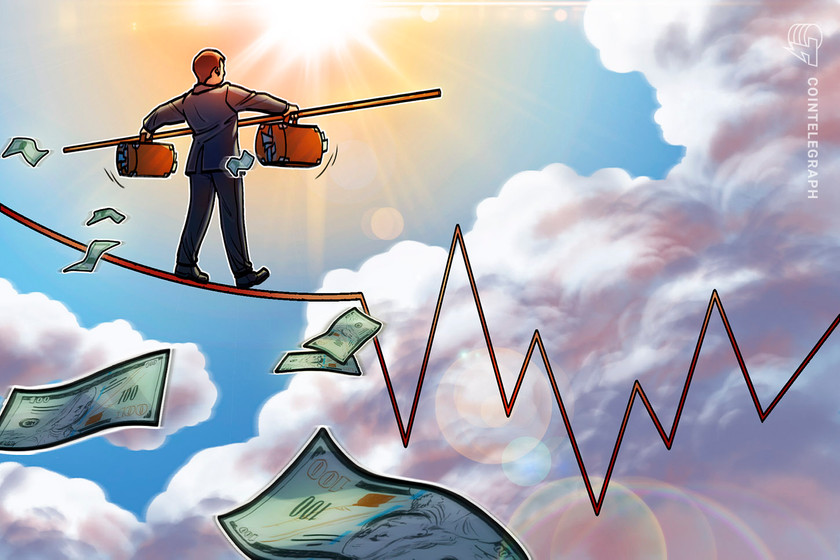Self-regulatory orgs for crypto keep ecosystem afloat pending clear regulations


In places where crypto has no solid legal framework, self-regulatory organizations act as a ladder for crypto companies to evolve.
The crypto market is growing at a rapid pace, with governments and various regulatory bodies actively trying to study and keep up with the growth.
While many policymakers around the globe have come to realize that banning the crypto market is not an option, many are yet to come up with a formidable framework to regulate the nascent market in their respective countries.
Even some of the most crypto-friendly countries have only managed to regulate parts of the crypto market such as crypto trading while a significant chunk of crypto-related activities still remains a gray area.
Thus, for a rapidly growing industry like crypto, which often remains under heavy government scrutiny, surviving becomes a complex task. This is where self-regulatory organizations (SRO) come into play.
Self-regulatory organizations have complete authority in developing policies, maintaining guidelines, enforcing policies and resolving conflicts. Although self-regulatory groups are private, they are subject to government scrutiny; if there is a discrepancy between the regulations of the two bodies, the government agency takes precedence.
Bradley, founder of crypto trading platform Y-5 Finance, told Cointelegraph:
“SROs are becoming more commonplace within countries lacking any official cryptocurrency regulation. Technology such as blockchain does not fit easily into traditional regulation and proponents of SRO state that they can help integrate a new complex industry into existing traditional agencies. SRO’s are self-funded and self-governed, and some have received criticism for taking the side of their members rather than the public.”
An SRO is a non-governmental organization formed by participants of a particular industry or sector to assist in the regulation of enterprises in that area. These SROs facilitate collaboration between industry experts and government policymakers and try to fill the regulatory vacuum until a widely recognized framework comes into play.
Financial Industry Regulatory Authority (FINRA), is a prime example of an SRO that works in accordance with the United States Securities and Exchange Commission (SEC) to enforce the regulatory bodies’ broader objective. Similarly, several crypto-based SROs have cropped up in various jurisdictions that have helped the crypto industry thrive.
Tony Dhanjal, head of tax at crypto taxation platform Koinly, told Cointelegraph:
Recent: US central bank digital currency commenters divided on benefits, unified in confusion
“In the absence of official or government-backed regulation, self-regulation and governance have been witnessed before in other industries. it demonstrates a degree of intent and responsibility toward ‘protecting investors.’ This further fuels confidence in the industry and accelerates innovation. SROs aim to ‘foster consumer protection and market integrity’ — they certainly seem to be making the right sounds.”
How SROs have helped across the globe
Over the past year, the crypto industry has managed to create the highest number of unicorns, or startup firms worth over $1 billion, as a significant chunk of investment from the traditional market has flowed into the crypto industry. The growing confidence of traditional markets in the crypto industry has been possible in part because of the self-regulatory measures that the industry has incorporated in the absence of government regulation.
Justin Newton, CEO of leading compliance digital identity verification technology firm Netki, told Cointelegraph:
“Eight years ago, I forecasted that regulations were coming to the cryptocurrency space, it was just a matter of when and under what conditions. It was clear even then that the industry would be best served by getting out ahead of regulators in terms of reducing risks and providing appropriate Anti-Money Laundering controls. We are more likely to get good frameworks if we design them rather than if we wait for regulators to force the issue.”
He went on to add that the crypto industry needs to be more proactive in offering solutions to the issues regulations attempt to address rather than fighting the inevitable interference from policymakers. He said that “self-regulatory bodies are a specific kind of organization that is created and empowered by legislation and regulation, which may not be the right fit for our industry, particularly due to the inevitable cross-border nature of the businesses participating in the ecosystem.”
There has been a global push for crypto exchanges to self-regulate. Japan and South Korea are considered pioneers of the self-regulatory industry and were among the first nations to establish SROs for crypto.
The Japan Blockchain Association (JBA) boasts 127 members and 35 crypto exchanges among them. It sets standards and promotes the development of a sound business environment and user protection system of virtual currency and blockchain technology. Over the years, the JBA has worked toward bringing awareness around the crypto market and holds regular meetings and discussions around the advent of new use cases with its latest focus being on nonfungible tokens (NFTs).
CryptoUK, a trade association with its own self-regulatory code of conduct, was founded by the United Kingdom’s seven largest crypto firms. The motto of the association is to help people in times of crisis, especially in case of a hack. Similarly, seven top crypto exchanges in India partnered with the Internet and Mobile Association of India to form a self-regulatory body.
South Korea’s blockchain association has 25 members and propagates the use of nascent blockchain tech among the masses. The SRO has been responsible for issuing crypto exchange guidelines and has also been a part of making crypto tax policies. The Korean blockchain association lobby has formally advised against the 20% crypto tax proposed in the country.
In the United States, the Gemini crypto exchange was the first to propose an SRO in the form of the Virtual Commodity Association. Later in 2018, a group of 10 financial and tech firms created the Association for Digital Asset Markets (ADAM). According to its website, ADAM now has 31 members and five partnering law firms.
Gabriella Kusz, CEO of the Global Digital Asset and Cryptocurrency Association — a global self-regulatory association for the digital asset and cryptocurrency industry — explained how the self-regulatory organization functions and works toward building policies to promote growth. She told Cointelegraph:
“Around the world, the Global DCA maintains a number of Memorandums of Understanding with other emerging self-regulatory movements so we can speak intelligently to the other global movements we are seeing develop credibly in this regard. In particular, we see excellent progress through leadership and stewardship in Nigeria through the Stakeholders in Blockchain Technology Association of Nigeria as well as with the Internet and Mobile Technology Association of India. Both of these are emerging self-regulatory movements, but they have sought to bring around a diverse and inclusive group of firms to advance standards, education and gentle advocacy to support public and private sector dialogue.”
Europe is currently lagging behind in terms of accommodating self-regulatory bodies, with Switzerland being the only stand-out nation.
Why should regulators pay attention to SROs?
The nature of a particular industry, the level of competition in the sector and its need for regulation usually will determine if an SRO is necessary. Either the member firms of the industry agree and create the organization themselves or the government could mandate the creation of an SRO. In many cases, SROs also serve as forums for producing educational materials or managing certifications within their industry.
Justin Hutzman, CEO of Canadian crypto exchange Coinsmart, explained the importance of how government regulations and SROs can go hand in hand. He told Cointelegraph:
“Along with country-specific regulations, the industry needs to take specific measures to self-regulation to meet certain global standards. Recently, CoinSmart and other exchanges from Canada, the U.S. and Singapore joined the Travel Rule Universal Solution Technology (TRUST) to boost its AML efforts. TRUST takes measures to reduce money laundering by ensuring that members are compliant with the travel rule while protecting user data.”
Self-regulatory organizations are adopting self-imposed standards for participants in the digital asset ecosystem that reflect compliance practices in traditional financial institutions. Regulators and legislative bodies around the world are beginning to address how digital assets will be regulated, but it could take years before standards are adopted. U.S. President Joseph Biden’s recent executive order on digital assets underscores the need for companies to address ethical practices and internal controls within their organizations.
Recent: Struggle for Web3’s soul: The future of blockchain-based identity
The growing prominence of self-regulatory organizations will contribute to the development of standardized compliance practices, allow for constructive engagement with regulators and accelerate institutional adoption of this emerging asset class. Organizations like the Association for Digital Asset Markets are building a foundation for this to happen.
Felipe Vallejo, the chief regulatory officer at Bitso, told Cointelegraph:
“We believe that the emergence of SROs and continued self-regulation set an excellent example for governments looking to assess risks and appropriate policy responses for crypto without stifling innovation.”
Self-regulation combats one of the drawbacks of every country potentially having different regulations, which makes it increasingly difficult for companies to operate on a global scale. Self-regulatory bodies have more opportunities to collaborate with each other and introduce global regulations that are consistent and meet the needs of investors and cryptocurrency companies.





















